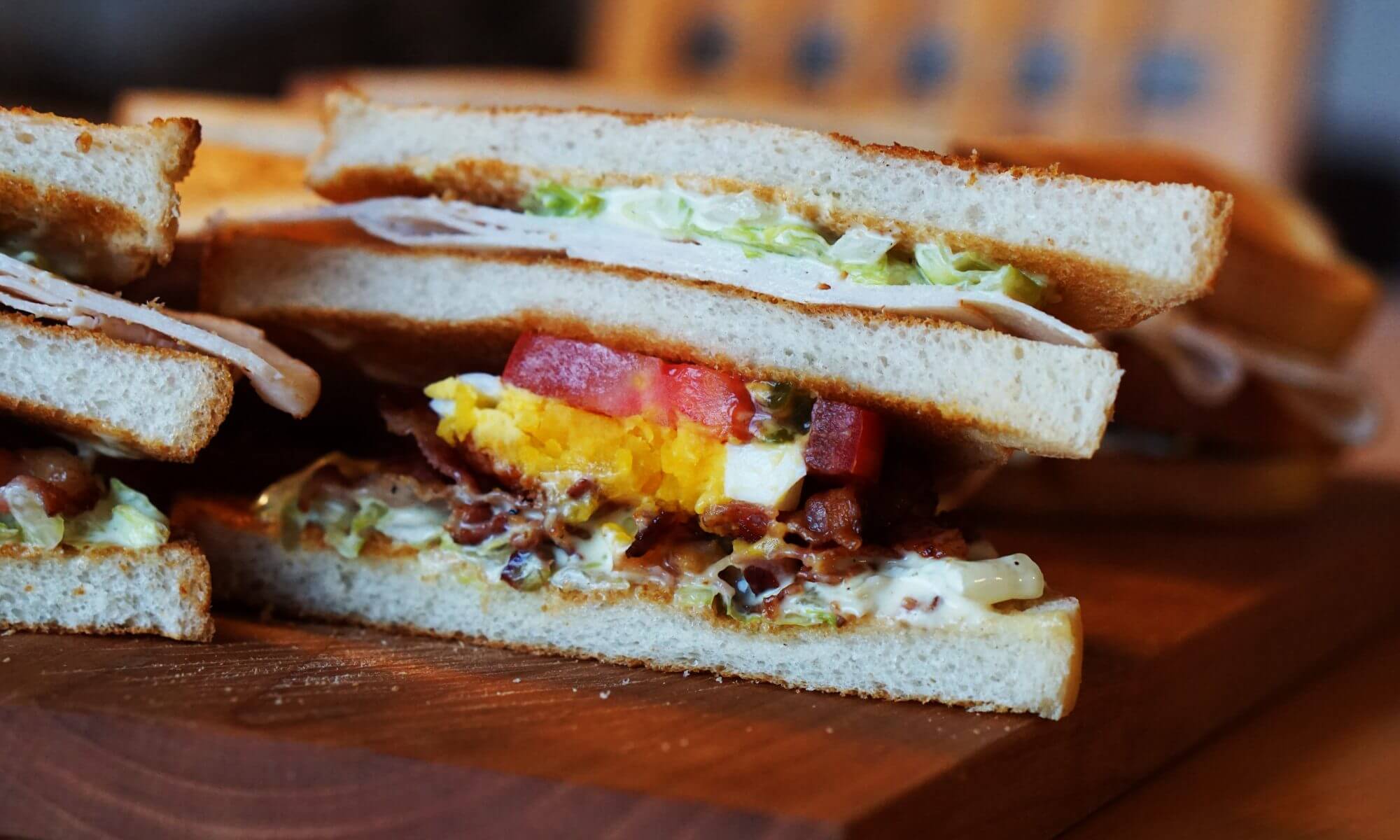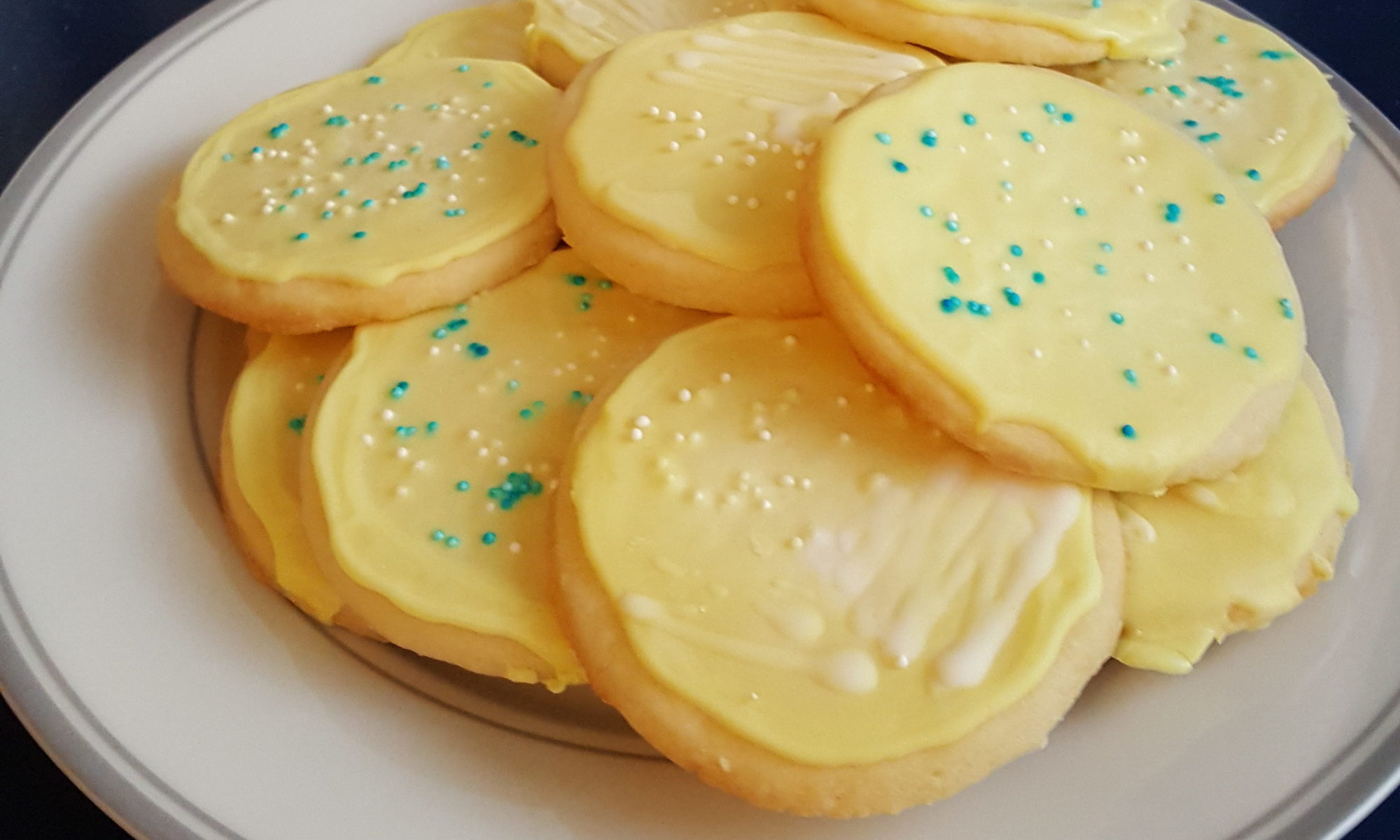Abstract
These cookies are designed to look like cultured petri dishes, with a sugar cookie base, yellow royal icing for agar, and additional icing & sprinkles for bacteria.
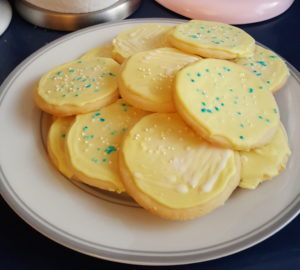
I. Introduction and Science Background
Petri dishes, such as the one shown below in Figure 1, are commonly used to grow bacteria and fungi. They have yellowish agar in the bottom, which the bacteria grow on and use as food. The agar is basically jello for bacteria (but possibly more delicious, depending on how you feel about jello, and definitely more nutritious).
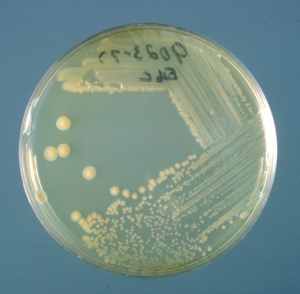
Fig 1. Petri dish containing gram-negative, Enterobacter sakazakii bacteria [Source: CDC Public Health Image Library, Image ID #3030]
Bacteria might be cultured (aka grown) for all kinds of reasons, including to estimate how many are present in a sample (like on a restaurant counter), identify the types present (like in a patient with an unknown infection), or for scientific research. Each small dot (or colony) in the image starts from one bacteria cell, but by the time we can see it with the naked eye, the one cell has divided into 10 million or more.
Bacteria and yeast are also important scientific tools that allow researchers to study all kinds of other things, like specific DNA or protein sequences. Bacteria are much better at accepting foreign DNA than human or animal cells, but since the process is mostly just mixing a bunch of tiny dissolved things together, it’s hard to know if the DNA was inserted correctly. To figure out which bacteria actually have the target DNA inside them, researchers have created clever strategies to make sure that the DNA is present, by adding extra modifier sequences to the DNA. For example, one modifier makes the bacteria resistant to a specific antibiotic, so only bacteria that got the DNA will survive if the plate has the antibiotic on it. Another modifier encodes an enzyme called beta-galactosidase, or beta-gal. When combined with a plate that contains X-gal (an organic compound), the beta-gal cuts X-gal to make a blue substance, making the bacteria turn blue.
When the bacteria are modified, target DNA inserts right in the middle of the beta-gal sequence, disrupting the sequence so that the enzyme can’t form. So bacteria that have the target DNA in the right place are actually white, and the rest are now blue (Figure 2).
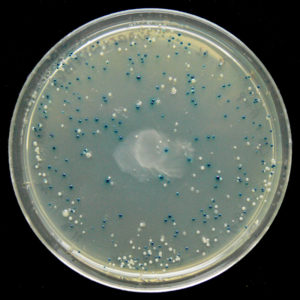
Fig 2. Agar plate containing a blue-white screen. [Source: Photograph by Stefan Walkowski, distributed under a GNU Free Documentation License and available in the Wikimedia Commons.]
II. Materials and Methods
Inspiration for design:
I first saw these cookies several years ago on Pinterest, and followed the trail back to notsohumblepie.blogspot.com, which has many other great science cookies as well! The original blog didn’t give many recipe details, so I used some other sources to recreate the look of the cookies.
Sugar cookie base:
My favorite sugar cookie recipe is actually from the back of a Minnie Mouse children’s book in which Minnie makes cookies for all her friends on Valentine’s Day. I’m not sure if there’s anything that truly makes them superior to other recipes (since they’re from a simplified recipe designed for children :)), but I think they were probably the first fresh-baked cookies I’d ever tasted in my short life1. At the age of 5 or 6, they blew my mind and I’ve never fully recovered.
The Minnie Mouse book (and therefore the recipe) were lost to me for years, but just a few years ago my wonderful sister found the book in our basement! Since then this has been my go-to sugar cookie recipe — while that first amazing bite can never quite be recreated, I still think they’re pretty tasty and just as importantly, they have enough structural integrity for shaping and frosting.
To make the agar plate shape, I cut the cookie dough into circles with a jar lid because I didn’t have a round cookie cutter.2
Icing:
For both the yellow “agar” layer and the white bacteria, I used royal icing, based on a recipe using meringue powder (eliminating the need for raw egg whites). I thinned out the icing with milk for the yellow layer, and thickened it with powdered sugar for the piped bacteria layers.
To dye the agar layer yellow, I just used a bit of yellow gel food coloring.
Streaking technique:
Sometimes (especially when trying to isolate genetically modified bacteria), agar plates are populated with a “streaking” technique, which gradually dilutes a bacterial solution, allowing for better separation of colonies (see this youtube link for a demo). I didn’t actually create streaks of icing this way, but I tried to imitate the streaking pattern by piping some firmer royal icing on one side of the plate.
Individual colonies:
To make individual colonies, I used round, white nonpareils sprinkles (similar to these). To imitate a blue-white screen, I dyed some of the sprinkles blue by mixing them in a bowl with a little bit of blue gel food coloring — they actually did a pretty good job of not dissolving, but I didn’t have cookie tweezers so I did end up with very blue fingers!
III. Results
The cookies came out pretty well overall (Figure 3)!
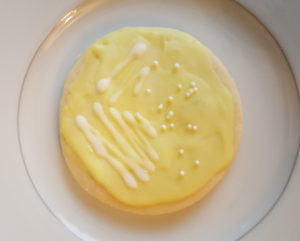
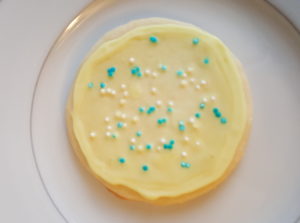

Fig 3. Finished cookies (Top) Streak plate with colonies (Middle) Blue-white screen plate (Bottom) Collection of poorly-stacked plates
Royal icing performance:
Royal icing is always a struggle for me! I don’t think this recipe is the magic one either, unfortunately. It didn’t really stiffen or reach the consistency described in the recipe, so I ended up needing to constantly adjust with powdered sugar and milk to make the icing thin enough to spread or thick enough to pipe. In the end it felt like a regular cookie icing, and I don’t think the meringue powder added any benefit in terms of stability.
Taste tester response:
Some people found the idea of eating an agar plate gross, but the yellow color is unrealistic enough that it was okay for most! Personally I think the cookies taste better without the icing as it’s extremely sweet.
IV. Discussion and Future Work
Overall, these cookies were edible and looked like agar plates! I did make one mistake in the blue:white color ratio– when using the beta-gal (blue bacteria) trick to find special bacteria for research, it’s usually pretty rare to find cells that got the target DNA. Therefore, my cookie colors are backwards — actually, most of the sprinkles and streaks should be blue, and only a few lucky ones should be white.
The plates could also be even more realistic looking if the agar layer were actually made of, well, agar. A jello layer could be added on top of the cookie base, but I don’t know if the two textures would actually taste good together… the jello seems like it would be too wet.
And to make things even more creepy, you could make blood agar petri dishes — these dark red plates are made with animal blood and used for growing certain bacteria types.3
Finally, finding a workable royal icing recipe remains the bane of my existence. Please do let me know if you have a good one!
V. References and footnotes:
Minnie’s Valentine Cookie Recipe
“Ask a grown-up to help you make these delicious sugar cookies!”
Ingredients:
1 cup butter
2/3 cup sugar
1 egg
1 teaspoon vanilla extract
2 1/2 cups sifted flour
1/2 teaspoon salt
- Cream the butter and sugar. Then beat in the egg and vanilla. In the separate bowl, combine the flour and salt, then mix with the butter/egg/sugar mixture.
- Chill the dough for 3 hours.
- Preheat oven to 350°F.
- On a flour-covered surface, roll out the dough to 1/8 inch thickness and cut into shapes with cookie cutters. Bake cookies on a greased cookie sheet for about 8 minutes.
1Not strictly accurate since I probably had my dad’s fresh-baked oatmeal raisin cookies first, but on the other hand oatmeal raisin doesn’t really count as a cookie (sorry Dad!)
2I took this screenshot of multiple cookie cutters for sale on the same website. I think they should package them in a collector’s set for true sports fans.
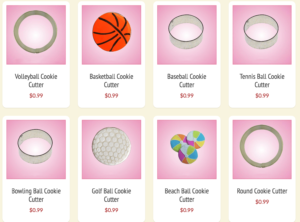
3I once used blood agar plates during an internship to grow P. acnes, the bacteria that cause acne. The bacteria prefer low-oxygen environments, which is also usually the environment in a clogged pore.
